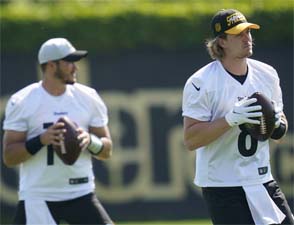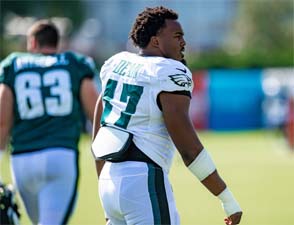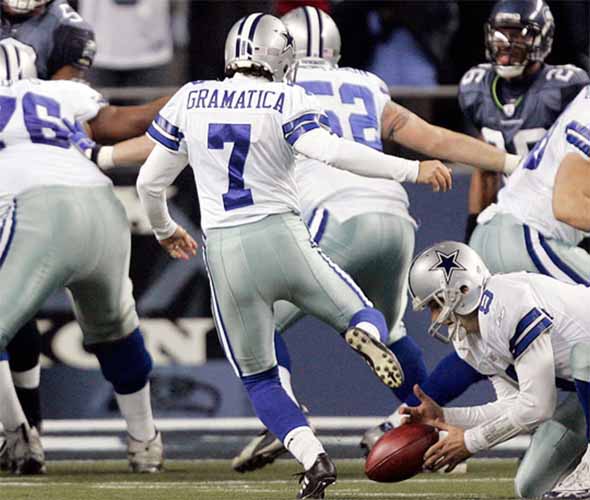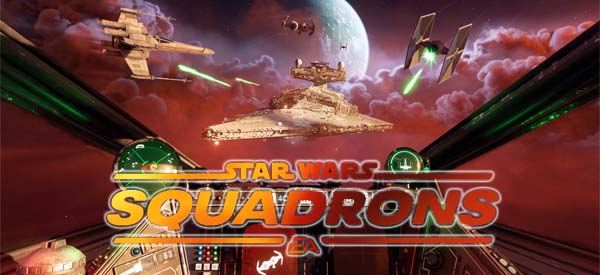
I'm going to change pace a little bit for this installment of "How Madden Fails To Simulate Football". Previously, I've focused on the rules of the game and on on-field gameplay. This time, I'm going to go off the field and start talking about team-building and coaching strategies, which are key to creating an engaging Franchise Mode experience.

This is a topic that was voted upon by my Patrons. If you would like to have voting power to influence the content that I create, then I encourage you to support my content creation through Patreon. Patron support helps offsets the cost of the server for my blog, the license for the software that I use to YouTube edit videos, and any research material that I buy.
The COVID years have been hard on a lot of people, and many of my Patrons had to discontinue their support due to financial hardships. I want to take a moment to wish all my former Patrons the best. I hope that 2022 treated you better, and that 2023 will be better yet. I'd also like to thank my current Patrons and those who stuck with me. To all my Patrons -- past, present, and future -- thank you for your support.
Now let's talk football! I'm writing drafted this essay in the month or 2 leading up to the 2023 NFL Draft, so this topic will actually be kind of relevant at the time that it is published.
The full video on YouTube contains additional commentary and examples.
One of the ways that Madden is most different from real life football is that in Madden, the exact skill level of every player in the league is known to everyone all the time. Because of the way that Madden implements player attributes and progression, users don't have to evaluate player talent at all. Ever. In the vast majority of cases, ordering your depth chart is a simple matter of sorting the players by their overall ratings. And if it's not the overall rating, then there's usually a single other attribute rating that determines who starts and who doesn't. It's usually speed. For example, I favor kick and punt returners with speed, and usually put my fastest reserve player as my starting returner, regardless of his overall rating. So yes, there are some edge cases where a user gets to make judgement calls about which player better fits your play style. But for the most part, it's all about that overall rating.
This means that there is no mystery or question about which players are actually good, which players aren't so good, and which players are outright busts. It also means that Madden doesn't have true position battles. One player is objectively better than the other in the vast, overwhelming majority of cases, even if it is just marginally so. It means there's no question whether a free agent or trade will be an upgrade over the players already on your roster. It means that there isn't much value in testing out rookies in the preseason because you already know exactly how good those players are, and whether they are deserving of a starting position or roster spot based on their overall rating.
All of the intrigue and "what ifs" that go into roster movements and decisions in NFL front offices are simply non-existent in Madden because so much of the game is based on these absolute numbers that are completely open and transparent to everybody.
 photo credit: Pittsburgh Post Gazette
photo credit: Pittsburgh Post Gazette
 photo credit: John Jones / Icon Sportswire
photo credit: John Jones / Icon Sportswire
Every year, there are questions about who is the best player in many teams' lineups.
Think of some of the big questions from early in the 2022 season: Is Mitch Trubisky better than the rookie Kenny Pickett? Should Devin Singletary get more carries than James Cook? How about Tony Pollard or Ezekiel Elliot? Should the Packers look to Allen Lazard or Sammy Watkins to replace the lost productivity of Devante Adams? Will Nakobe Dean play well enough as a rookie linebacker for the Eagles, or should they stick with their veteran starter from last year? Is Bailey Zappe better than Mac Jones? Is Trey Lance better than Jimmy Garoppolo?
[More]
9f10d671-d80e-4d7a-9525-a0be037a7e58|19|2.8
Tags:Madden, Madden NFL, How Madden Fails to Simulate Football, EA, EA Sports, Electronic Arts, Tiburon, football, simulation, sports, YouTube, preseason, training camp, draft

Before I begin this essay, I would like to invite my readers to become supporters through Patreon and be able to vote in a poll to decide the next topic in this series. I have several broad outlines for topics, but no actual draft yet. So I'm asking my Patrons to decide which of those topics I should cover. The poll closes at the end of October, at which time, I expect to start work on the draft for the next topic.
I'd like to take this moment real quick to sincerely thank my current Patrons. Your support really helps, to by offsetting the maintenance of this site, and the cost of software licensing that I use to create content for this site and my YouTube channel.
I also want to provide a short disclaimer that the original video was posted before I had a chance to play any of Madden 23. I have since played several matches in Madden 23, and can confirm that none of the problems discussed in this video have been fixed or addressed. In fact, issues with fumbled footballs teleporting into the hands of the recovering player seem to have gotten worse in the newer game. In just a handful of matches, I've already seen multiple examples of the football teleporting through the bodies of prone players and into the hand of a recovering player who is a full yard or two away from the football. It's bad.
Anyway, onto the actual topic!
This essay is also available in video format on YouTube.
The previous topic was about Longsnapping, and included proposals for adding both ratings-based and skill-based botched snaps into the game. Botching a snap might lead to a bad kick, or a kick being blocked, or the snap sailing over the head of the holder or punter for a fumble. But even though I want botched snaps to be represented in the game, there is one caveat. One of the biggest and most long-standing A.I. and animation problems with Madden is its lose-ball scenarios, and putting bad snaps into the game might not be a good idea unless Tiburon and EA also address this long-standing problem.
But hey, Madden already has muffed punt returns, onside kicks, strip sacks, and just regular old fumbles in the game already, so once again I ask: why are all these other things in the game, but botched snaps are a bridge too far?
Anyway, some of the issues with the pass rush that I mentioned in the Pass Rush essay would also be alleviated by better loose-ball logic. The excessive strip sacks of Madden 17 and Madden 21 might not have been such a big problem if the players were smarter about recovering their own fumbles, and if scooping and scoring weren't so easy for defenders. But I'm getting ahead of myself. Let's now look at how Madden fails to model fumbles, fumble recoveries, onside kicks, and other loose-ball situations.
 Photo credit: Sports Illustraded
Photo credit: Sports Illustraded
Adding botched snaps to the game would exacerbate existing issues with fumbles and fumble recoveries.
[More]
45330120-4b66-4583-be01-f6a356253cc1|0|.0
Tags:Madden, Madden NFL, Madden NFL 21, Madden NFL 22, EA, EA Sports, Electronic Arts, Tiburon, football, simulation, sports, fumble, fight for the fumble, onside kick, All Pro Football 2k8

I don't think I've ever played a football game that feels like it truly nails special teams play. Madden has been especially bad at this phase of football for a very long time, and has largely neglected it year-in and year-out. Every now and then, a release comes out that focuses on special teams, but the upgrade is never as comprehensive as it should be. I was considering making a video about all of special teams, but that's too big a topic to tackle in a single video, so I decided that it would be best to make shorter videos that each focus on specific aspects of special teams play.
While drafting the script for my previous video about pass blocking and pass rushing, I had started thinking about issues with blocking and rushing in special teams, and thought I'd do a video about one specific specialist position that has been a personal crusade of mine for quite a few years now. I'll surely discuss more of Madden's special teams failings in future videos. But for today, I want to talk about how Madden completely fails to do justice to an oft-overlooked and under-appreciated specialist position: the longsnapper.
The full video on YouTube contains additional commentary and examples.
I'm looking at this specific position for two reasons:
- I played on special teams in high school and worked alongside our longsnapper. He spent extra time before and after practices honing that skill.
- And the 2nd reason I'm covering this topic is: unlike other highly specialized positions like holder and kickoff coverage gunners, Madden actually includes Longsnappers as a position in the depth chart, but has never included any mechanics or rules that actually make the longsnapper a meaningful position on your team, or which differentiate who is a good longsnapper versus who is not.
As for my high school teammates on special teams: there were several of us who never would have seen playing time if not for our special teams duties. Instead of resigning ourselves to a life on the bench, as some other reserves had done, we carved out niches for ourselves, so that we could see more playing time. We worked hard to earn our positions, and the coaches noticed the hard work (especially if it was extra-curricular in nature), and they rewarded us with extra rotational reps on both offense and defense in relief of tired starters. My experience has lead me to respect special teamers, probably much more than most football fans.
Some of us reserve players would have never seen playing time if not for our specialist roles.
A Knee-Jerk Reaction
I remember proposing a "Longsnapping" rating on a YouTube comment or Madden forum like 6 or 7 years ago, and received absolutely vitriolic responses that largely boiled down to "having the outcome of a game decided by a random fluke like a botched snap would be horrible game design." It's a sentiment that does makes a certain degree of sense. Determining the outcome of a match by a die roll does seem like it would be bad video game design -- at least, outside of digital craps.
But hold on a minute. Is it really bad game design...?
Running backs have a rating that determines their likeliness to fumble. Quarterbacks have several ratings that determine the accuracy of passes. Receivers have several ratings that determine their likelihood to catch a pass. Linemen have ratings that determine if they whif on a block. Defenders have ratings that determine the likelihood of missing tackles. DBs have ratings that determine whether they blow a coverage. Kickers have ratings that determine if they miss a kick. Every player has ratings that determine if they get injured on any given play. All of these ratings can affect the outcome of a play or an entire game based on a random die roll. Heck, even coaches have ratings that determine how much players develop in the offseason or how likely free agents are to sign a contract. Ratings semi-randomly deciding the outcomes of games or entire seasons is apparently OK for literally every other position both on and off the field, but somehow having a rating that determines if a snap or special teams hold is botched is a bridge too far?!
Nobody complains about other positions having ratings that can randomly decide a game.
To be fair to the critics: if you're playing a 5 or 6-minute quarter pick-up game online or in Ultimate Team, and each team is only getting between 3 and 5 possessions the entire game, it does make sense that you wouldn't want your one and only attempt at a punt or field goal to go awry because of a fluke like a botched snap. In such a shortened game, it would swing the game wildly in one direction or the other, with little-to-no time or opportunity for a team to overcome such an unfortunate outcome. (I keep saying, every installment in this series is probably going to refer back to that first essay about quarter length.) [More]
52c53c48-f188-452b-8dd5-d518c8a400d5|0|.0
Tags:Madden, Madden NFL, How Madden Fails to Simulate Football, EA, EA Sports, Electronic Arts, Tiburon, football, simulation, sports, YouTube, longsnap, longsnapper, special teams, field goal, punt, Tony Romo, Ace Ventura: Pet Detective

In the previous essay in this series about how Madden fails to simulate football, I discussed how QBs in real football go through their progressions to find open receivers to throw to. And then the second half pulled a bit of a bait-and-switch and turned into a pitch for the return of the QB Vision mechanic, or something analogous. Surprise!
I also briefly talked about how the goal of the defense is to cover the primary receiving threats long enough for the pass rush to disrupt the play. In the best of cases, the defense can cover the receivers long enough to sack the quarterback, or force him to make a bad throw into coverage that is intercepted. But sacks and interceptions aren't really the goal of the defense. The defense will, of course, be happy to take them when they happen, but no defensive play is really designed to force a sack or an interception.
The full video on YouTube contains additional commentary and examples.
Truth is that a lot of relatively mundane outcomes can be complete successes for the defense. Forcing the QB to throw before he can make his reads and set his feet so that he throws an inaccurate ball is a success. That is true whether the QB deliberately throws the ball into the sixth row of the stands, or if his rush to release the ball puts it inches out of reach of the receiver's outstretched fingertips, or if his inability to set his feet results in a weak, wobbly ball that bounces harmlessly at the receiver's feet. Or maybe the defense tips the pass or knocks it down such that the play gains no yards. All of those outcomes represent unqualified defensive success.
Defenses don't need sacks or turnovers to "win" a series.
If a defense can do this for three consecutive plays and force the offense to punt, then the defense did it's job, even if it isn't flashy, doesn't show up in a Chris Berman highlight reel, and doesn't light up a stat board. Heck, even forcing a check down that is completed for positive yards, but which does not result in a first down is still a success for the defense! Especially if it happens on 3rd or 4th down.
Of course, the defender who wants to pad his stats with a sack or interception, and get a big payday next time contract negotiations come along, might disagree.
EA's Madden video games apparently disagree as well. Since the pace of play in Madden is sped up to facilitate the shortened length of quarters, gaining yards and making first downs is really easy for the offense, but yet sacks are paradoxically too common.
Get used to hearing statements like that. Quarter length and game pacing was the first essay of the series for a reason! -- because it really is so fundamental to almost everything that is wrong with Madden. I would not be surprised if every single essay of this series will refer back to that first episode at least once or twice!
For much of Madden's history, pass rushers either have no impact on the play (because the QB can see the entire field and can hit any receiver on the field with the press of a button), or the pass rush downs the quarterback for a seven yard loss on a sack. Sometimes two or three times in a row if the game's scripting or an X-Factor ability decides that the defense should win this particular possession.
Playing Madden on 15-minute quarters, it's not uncommon to see each team pile up 5, 6, or 7 sacks by the end of the game. For reference, good NFL defenses usually average 2 or 3 sacks per game. You can adjust the difficulty level or the "Pass Blocking" A.I. sliders to reduce the frequency of sacks, but then this leads to the opposite problem of the pass rush being almost completely irrelevant, and QBs having the opportunity to complete more deep shots that inflates completion percentages, passing yards, and final scores.
On 15-minute quarters, it is not uncommon to see each defense record 5 or more sacks. [More]
a6a80c39-8342-4d3a-b342-7e65d2672e8a|0|.0
Tags:Madden, Madden NFL, How Madden Fails to Simulate Football, EA, EA Sports, Electronic Arts, Tiburon, football, simulation, sports, YouTube, pass rush, blitz

I don't think it will be controversial to say that the best part of EA's 2017 Star Wars Battlefront II was the multiplayer space dogfighting. It made me yearn for a good Star Wars flight sim in the vein of the old X-Wing and TIE Fighter PC classics. But in this age of big-budget, micro-transaction-fueled, multiplayer-focused, spectacle shooters, I wasn't going to hold my breath for EA (the exclusive rights-holder to Star Wars games) to deliver any time soon, especially after a planned remake from LucasArts was canceled back in 2009.
So it came as a surprise to see Star Wars: Squadrons. Yes, it's an online game with a competitive multiplayer focus, so no divergence from modern norms there. But it's also a $40, "middle-shelf" game built on a lower budget than the usual AAA blockbuster that EA produces. That lower budget and pricetag seems to have liberated developer Motive from much of the corporate burden of expectations associated with a larger-scale, more expensive product. Squadrons takes a few risks by raising the expectations and barrier of entry for players, and it doesn't stoop to offsetting its lower pricetag by incorporating a micro-transaction economy (at least not yet).
A flight-sim light
Much like the Ace Combat series, Star Wars: Squadrons hits a good, comfortable middle-ground between an arcade dogfighter and a flight-sim. Squadrons even errs a bit closer to sim in some regards via its power-allocation and sub-system-management mechanics. It is also much more restrictive about the use of special weapons. While Ace Combat allows players to coast along by shooting down almost every enemy plane with your stockpile of 60 or 70 missiles (despite flying a plane that only has between 2 and 6 missles strapped to its undercarriage), Squadrons focuses much more heavily on the use of the fighters' primary laser cannons.
Squadrons locks the player into a cockpit view.
Players are even locked into a cockpit view with limited HUD elements, forcing players to rely on the cockpit instruments. This game makes me wish I had a good PS4-compatible flight stick. The only flight stick I own is an old PC one, which I had to jury-rig to work with Ace Combat 7 on Steam.
No, it isn't as as involved as the classic X-Wing and TIE Fighter PC flight sims, but it's a significant step up from the N64 Rogue Squadron game and its sequel.
Motive has redeemed itself from the awful
single-player campaign of Battlefront II.
A more serious effort
Squadrons shows a lot of signs of learning from the failures of Battlefront II. In fact, I was surprised to find out that Motive was not the studio that developed Battlefront II's space dogfighting. That duty was handled by Criterion Studios. Motive was, in fact, the studio behind Battlefront II awful single-player campaign.
This time, Motive seems to have put some actual thought and effort behind Squadrons' campaign, its story, and its characters. Almost as if this is a project that the studio actually wanted to do, rather than being a project that was imposed upon them by a greedy publisher who just wants a token single-player mode in a game that is actually designed to scam money out of people with pay-to-win online multiplayer. [More]
6b0898a3-e76b-46e8-b3fa-ca9e10854698|1|5.0
Tags:Star Wars, Star Wars: Squadrons, EA, Electronic Arts, dogfighting, cockpit, VR, flight sim, multiplayer, Galactic Empire, New Republic, X-Wing, Y-Wing, A-Wing, U-Wing, TIE Fighter, TIE Bomber, TIE Interceptor, TIE Reaper, Star Destroyer, MC-75, Mon Calamari cruiser, corvette
|

| 12 | | | | | | | 60 | | 11 | | | | | | | 55 | | 10 | | | | | | | 50 | | 09 | | | | | | | 45 | | 08 | | | | | | | 40 | | 07 | | | | | | | 35 | | 06 | | | | | | | 30 | | 05 | | | | | | | 25 | | 04 | | | | | | | 20 | | 03 | | | | | | | 15 | | 02 | | | | | | | 10 | | 01 | | | | | | | 05 |
|